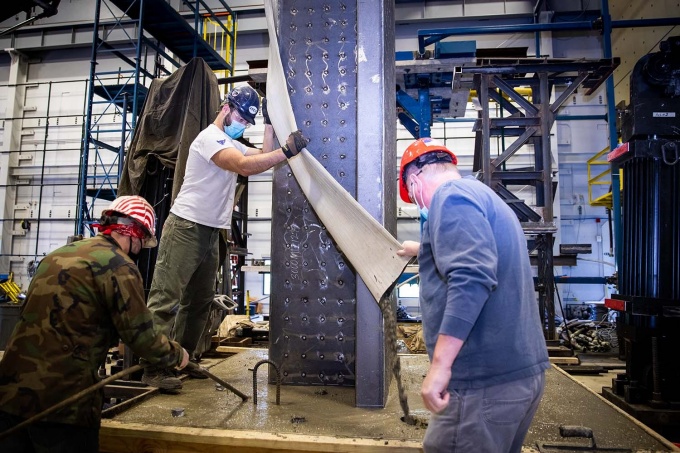Structural Engineering, Mechanics and Materials

Our structural engineering, mechanics and materials researchers continue to enhance community resilliency to earthquake, develop design guidelines for buildings and other structures. Faculty and students are also emerging as leaders in various areas such as wind, fire and materials engineering. Research in mechanics involves the application of the fundamental principles of solid and fluid mechanics to a variety of emerging engineering problems, using state-of-the-science numerical algorithms and high-performance computing technology.
Our Structural Engineering, Mechanics and Materials group are also active in bridge engineering. Investigators have developed design guidelines to make bridges safer and more resilient. The contributions of our bridge engineers continue to repair aging infrastructure in the U.S.
Research Centers and Labs
Institute of Bridge Engineering Overview

The Institute
The Institute of Bridge Engineering (IBE) provides practicing engineers and students the skills and knowledge to advance the nation's bridge infrastructure enterprise. Active researchers within IBE have tackled some of the nation's most pressing issues facing bridge and infrastructure engineers: fires in tunnels, modeling the the impact of different wind events on bridges, various impacts artificial intelligence has on bridges and structural health monitoring, and other aspects of the discipline.
In addition to the active researcher happening at the Institute, IBE also works closely with the Department of Civil, Structural and Environmental Engineering to prepare the next generation of bridge engineers with its Advanced Certificate in Bridge Engineering. Designed specifically for practicing engineers who want to boost their educational credentials, the certificate program trains students in new construction methods and components, improving seismic resiliency and how to address problems with aging infrastructure.
IBE News

The Center's research aims to increase the disaster resilience of buildings, bridges and other key infrastructure.. Since 1987, MCEER, formerly the multidisciplinary Center for Earthquake Engineering Research (MCCER) and the National Center for Earthquake Engineering Research (NCEER) has produced over 600 publications that describe the latest research and developments on a wide variety of topics.


















